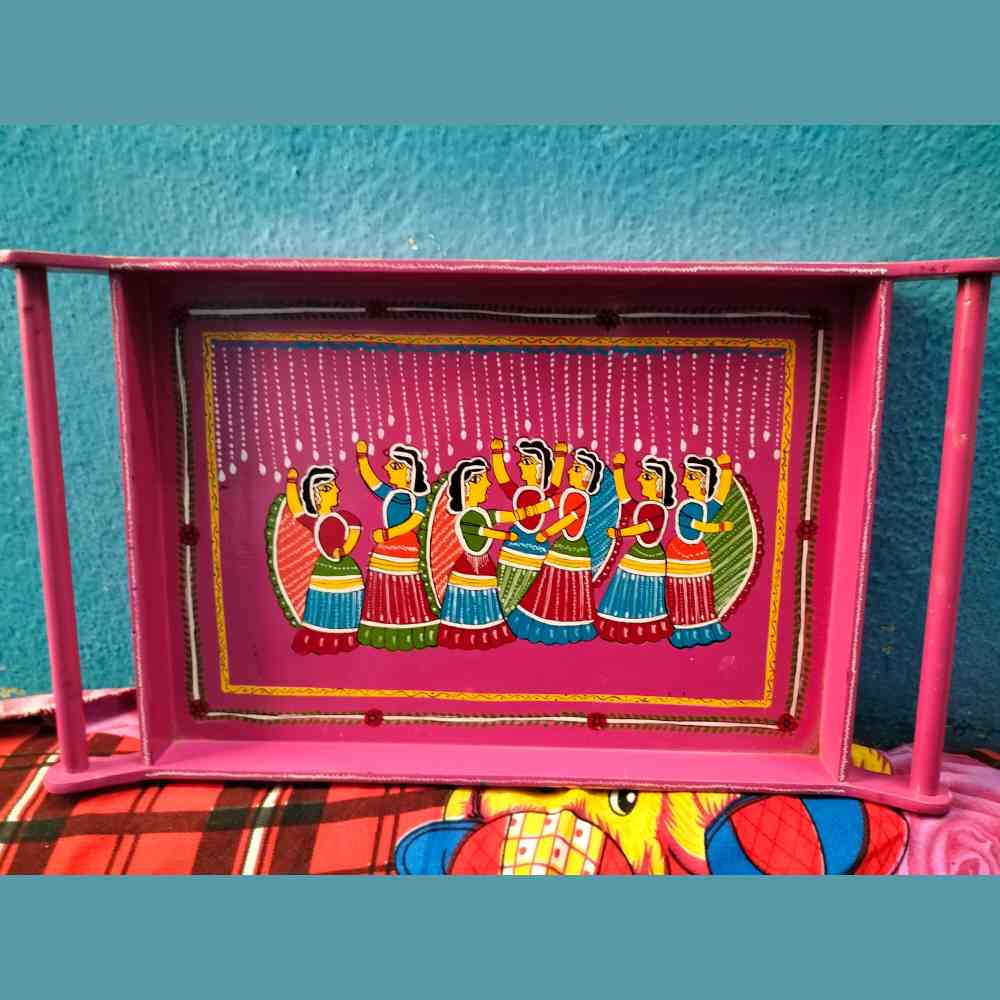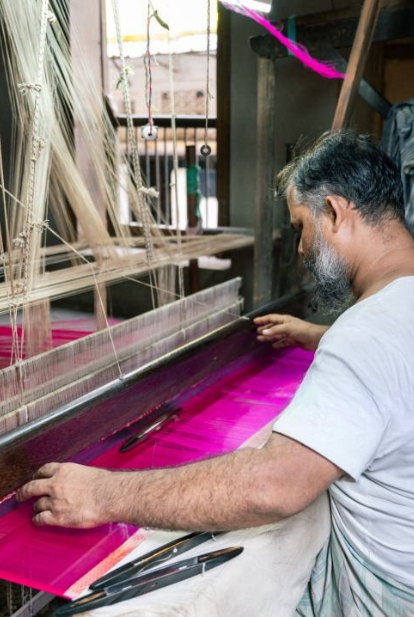We are gradually forgetting the rich traditional legacy of Bihar. WeaveHand serves as a dedicated platform to showcase and market authentic handloom products on our website.
Tikuli art is a unique and intricate art form from Bihar with a deep-rooted traditional history. The word "Tikuli" refers to Bindi, a decorative dot worn by women on their foreheads, often placed between the eyebrows. In ancient times, the Bindi was more than just an ornament—it was a poetic symbol of intellect, modesty, and spirituality.
Tikuli art originated over 800 years ago in Patna and flourished under Mughal patronage, who admired its craftsmanship. Unlike any other art form outside Bihar, Tikuli art stands out for its complex techniques and labor-intensive process, making it a rare artistic treasure.
The Traditional Process of Tikuli Art
The process of creating Tikuli art was historically very challenging and time-consuming. It involved three different artists, each specializing in a specific task:
- Glasswork: First, glass was melted in a furnace and inflated like a balloon. Once cooled, it was cut into the desired shape using a special tool.
- Gold Embellishment: Gold work was then pasted onto the glass surface.
- Painting & Finishing: Intricate designs of flowers, leaves, gods, and goddesses were carefully scratched and colored using a fine bamboo pencil. Finally, a coat of acacia glue was applied, and the piece was polished with a soft cloth.
A single piece of Tikuli art took 7 to 10 days to complete, and it was primarily reserved for queens and aristocratic women.
Over time, artists began fusing Tikuli art with Madhubani paintings, creating decorative items like wall plates, coasters, table mats, trays, and pen stands. This transformation expanded the scope of the art and increased its economic value.
The Revival and Elegance of Tikuli Art
Tikuli art originated in ancient Bihar, where it was once a privilege reserved for queens and aristocratic women. Over time, this exquisite craft began fading into obscurity. But can an art form so mesmerizing truly disappear forever? Of course not!
In 1950, Upendra Maharathi breathed new life into Tikuli art, reigniting the passion of art lovers. Today, this graceful and intricate art form has found a place in modern homes, adorning walls as decorative hangings, table mats, plates, trays, coasters, and more.
A Fusion of Tradition and Modern Elegance
Once a symbol of aristocratic fashion, Tikuli art is now making a comeback in a fresh, contemporary way. Beyond home décor, it has also become a fashion statement, with beautifully handcrafted Tikuli earrings and accessories gaining popularity among women.
At its core, Tikuli art has always been deeply connected to women—both in its themes and its artists. The paintings often depict women's lives, struggles, and grace, making them a storytelling medium as much as an art form. Even today, Tikuli art thrives in the skilled hands of rural women in Bihar, with over 60% of its artisans being women.
Tikuli Art Goes Global
Thanks to platforms like Weave Hand, this age-old art form has crossed borders, reaching international markets and captivating art lovers around the world. What was once an exclusive symbol of royalty is now a cherished treasure in homes and hearts worldwide, proving that true art never fades—it only evolves.
Process & Material Used in Bindi Art
Tikuli art started with something as simple as a bindi (Tikuli) but soon evolved into an intricate craft. In its early days, artisans shaped molten glass into beautiful forms and covered them with gold foil. While stunning, this method made Tikuli art too expensive for most people.
To keep the tradition alive, artisans found a smart solution—switching from glass to wooden boards and replacing gold foil with enamel paint. This small but significant change made Tikuli art more affordable and accessible while keeping its charm intact.
A Labor of Love and Precision
Creating a Tikuli painting isn’t just about painting—it’s a process that requires days of patience and dedication. Every layer of paint is carefully applied and then smoothed out with sandpaper before the next layer is applied. Once the base is ready, artists use the thinnest brushes to add the final, intricate details that bring each piece to life.
Keeping Tradition Alive
Tikuli art isn’t just about decoration—it tells stories. The designs often revolve around festivals, village life, mythology, and traditions, capturing the essence of Bihar’s rich culture. Though the process is time-consuming, Tikuli art is still thriving today, thanks to the artisans who pour their heart and soul into every piece.



